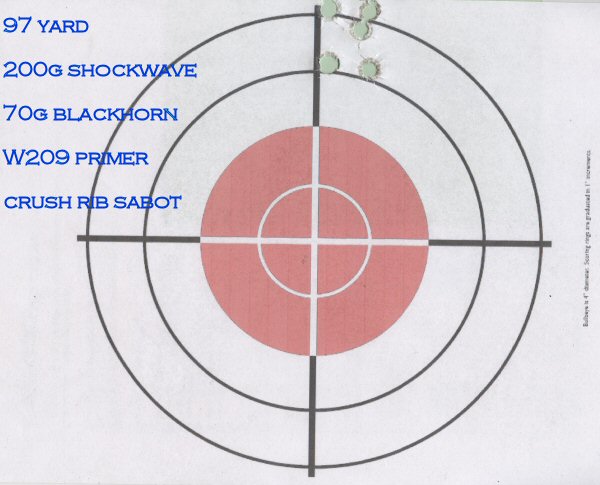- Joined
- Dec 29, 2007
- Messages
- 4,955
- Reaction score
- 3,141
In January on the other forum Grouse45 posted a short experiment about ignition of Blackhorn whilst using a sabot that 'too loose' in his rifle. Never did he experience a delay, or failure. This month, lemoyne posted on the other forum how he was shooting 3/4" groups, but the sabot was 'too loose'.
These two threads got me to thinking about how we are always reading on this forum that one needs to use a tight fitting sabot to reliably ignite Blackhorn. For about a week, i intentionally loaded the Optima using a crush rib sabot, which was a way way too loose. The sabot is so loose, i could push the ramrod down the barrel with one finger. Every day, every day, the results were about the same.

The first of the 5 shots was from a cold squeaky clean barrel. Note how a non-magnum primer was used to provide reliable ignition.
One day for the fun of it, i dumped two vials of powder down the barrel five times, to see what would happen using the 'too loose sabot'. Four of those shots made about a 2 1/2" group, the other shot was a squib.
These two threads got me to thinking about how we are always reading on this forum that one needs to use a tight fitting sabot to reliably ignite Blackhorn. For about a week, i intentionally loaded the Optima using a crush rib sabot, which was a way way too loose. The sabot is so loose, i could push the ramrod down the barrel with one finger. Every day, every day, the results were about the same.

The first of the 5 shots was from a cold squeaky clean barrel. Note how a non-magnum primer was used to provide reliable ignition.
One day for the fun of it, i dumped two vials of powder down the barrel five times, to see what would happen using the 'too loose sabot'. Four of those shots made about a 2 1/2" group, the other shot was a squib.





